
The Romance at Navajo Bridge
Table of Contents [Show]
KÜHL and The Peregrine Fund invite you to be part of the unfolding love story at Navajo Bridge. Join KÜHL in supporting this great foundation and their ongoing work to conserve the beautiful and endangered California Condor. For more information on how to donate, click here.
Our story begins high above the meandering Colorado River, where the red cliffs meet the azure skies of the American Southwest. If your adventures have recently led you across the Navajo Bridge, you might have already met the main characters.
For Valentine’s Day, we tell the tale of two California Condors, and how their species is teetering on the brink of extinction, yet keeps clawing back, driven by innate strength and human determination. This love story serves as a reminder that even in the wild, the heart endures, adapts, and never gives up.
Trials and Triumphs at New Heights
In February 2022, a pair of condors were spotted flying together over the cliffs at the Grand Canyon; marking a first-ever nesting attempt for condors male #619 and female #775. Regular pair flights and courtship rituals one day culminated in their cave.
Alan Clampitt, a volunteer at The Peregrine Fund, was in the field on March 9th, observing the pair. He remembers that he didn’t spot an egg the first time the female #775 got up to stretch in the cave. However, the next minute, she stood up again.
And there it was. A perfect condor egg.
The following 58 days – that’s how long the process of incubation lasts – the conservationists from The Peregrine Fund and other nature enthusiasts watched the egg in anticipation. Then, one day, equipped with just a temporary egg tooth, a baby condor broke free from the shell. Ready to claim its place in the sky, and unaware of its significance for the California Condor species.
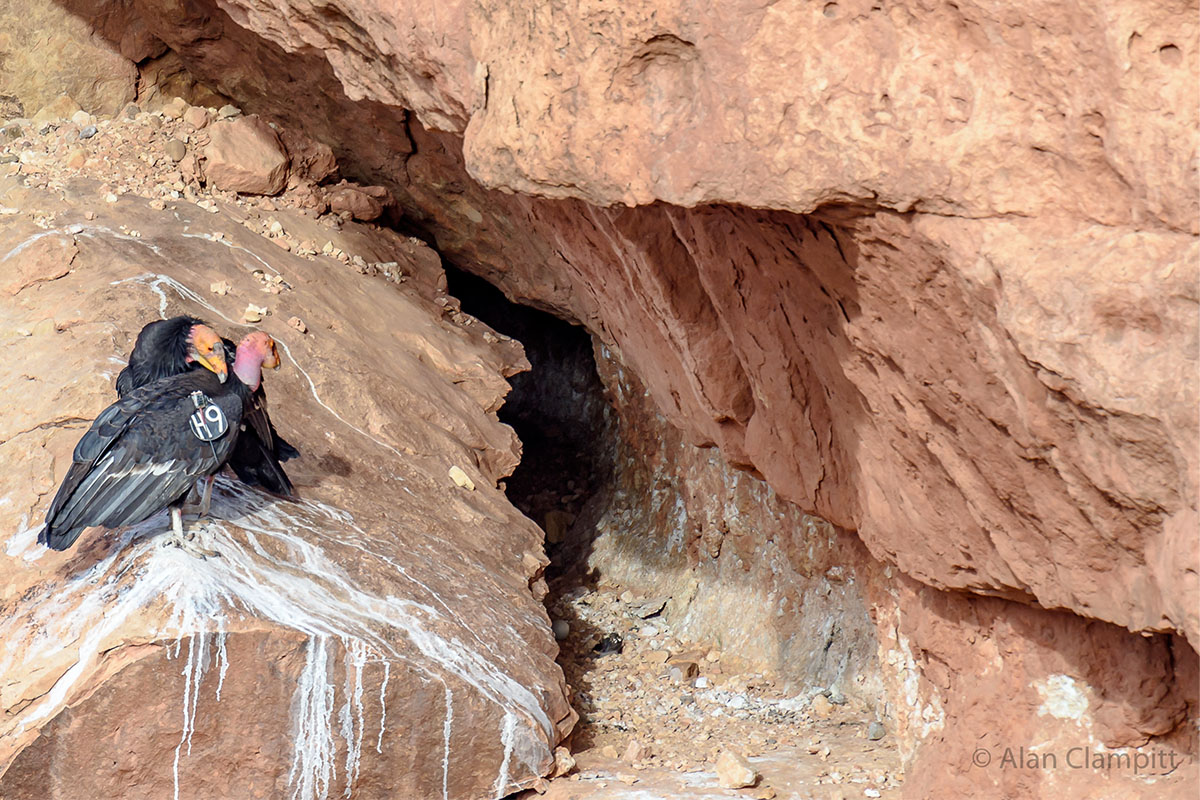
The nestling wasn't just another bird; it was the 1150th hope, a symbol of the resilience and dedication that define the recovery program. A six-month journey, from hatchling to fledgling, was filled with challenges and learning.
After spending months on a cliff edge, condor #1150 made its first flight on November 12th, 2022. From that moment, #1150 had the luxury of another 12 months with its parents, a crucial time of growth, discovery, and parental guidance until gaining independence.
But tragedy struck in March 2023, when Highly Pathogenic Avian Influenza (HPAI) loomed over the condor flock, claiming 21 lives, including the mother, #775. In the face of such loss, the story of #619 and #1150 became one of solitary struggle. As a single dad, #619 embodied the strength and fortitude needed to guide #1150 through the trials of youth and into the skies of independence.
He was a devoted father, who continued to feed #1150 and keep a watch on his fledgling who began to explore the Grand Canyon, while both escaped the grasp of HPAI. Today, #1150 is fully independent and able to find food on its long flights over the high desert country.
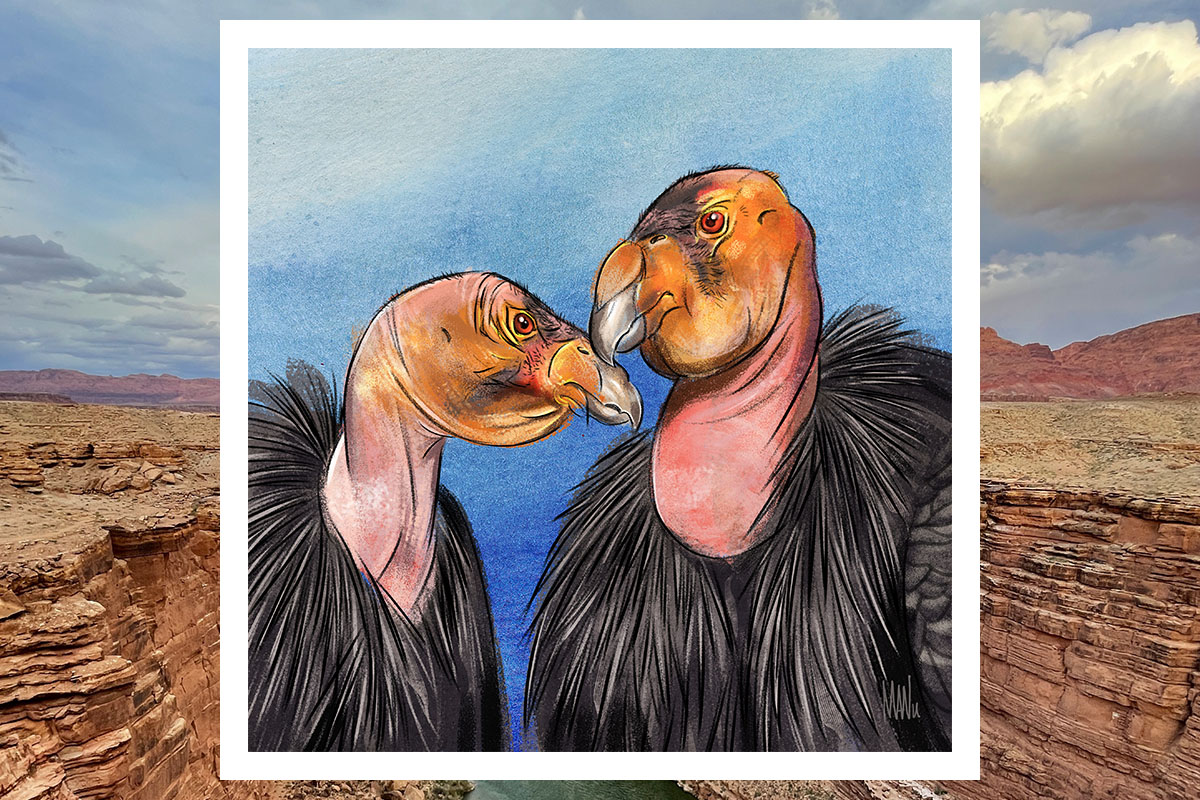
Finding Love Again: A New Chapter Begins
California Condors mate for life, but the loss of a partner often marks the beginning of a quest for continuity. For #619, this quest led him to #741, another female condor representing the possibility of a new partner. Their potential bond, a symbol of the condors' indomitable spirit, faced immediate challenges. Lead poisoning, a pervasive threat emanating from the remnants of human activity, cast a shadow over their newfound connection.
In late November, #619 was trapped for a health check that revealed elevated blood-lead levels and multiple metal fragments in his digestive tract. This suggested lead in the bird’s system, likely from eating animal remains on the landscape that were shot with lead-based ammunition.
Through the intervention of chelation therapy, a process that removes lead from the bloodstream, a hope emerged. The careful and compassionate efforts of conservationists offered #619 and #741 a fighting chance to potentially start their life journey together.
#619 was released back in the wild, to resume his courtship with his new partner. But not long after his release, on December 16th, the female condor #741 had to be treated for lead poisoning as well, while he was left to wonder where she was. After getting treatment, the female was released, with everyone hoping that the bond could be rekindled.
As #619 and #741 navigate this delicate phase, their potential relationship signifies more than companionship. It's a beacon of hope for the future of their species…
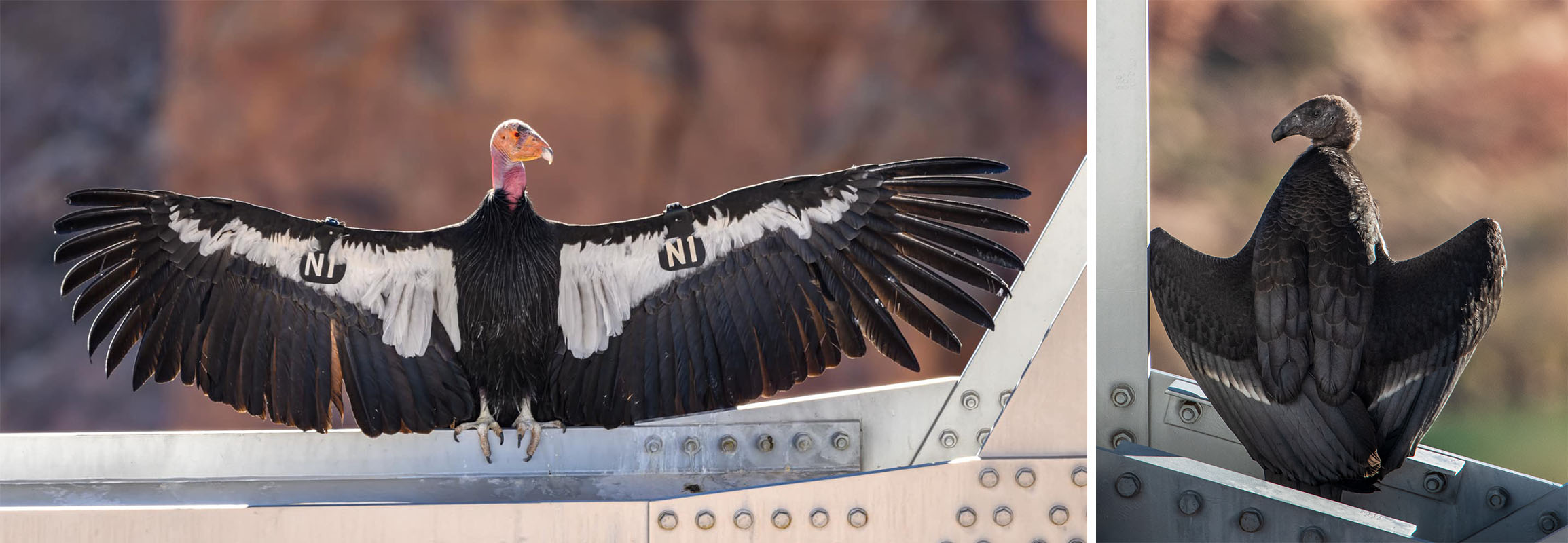
It’s complicated…
Recently, there has been a new layer to the already complex narrative of the California Condors. As #619 navigates the delicate path of courtship with #741, the sudden appearance of male #354 introduces an element of unpredictability to the tale.
#354, a dominant presence at Navajo Bridge with a history of successful mating, seems set on disrupting the budding relationship between #619 and #741. His assertive displays and pursuit of #741 lately signal a brewing battle for dominance and affection, a natural yet intense drama playing out in the wild.
This twist in the story is a clear reminder of the fact that the impact of human behavior and HPAI has not only been a blow to the health and numbers of the condor population but has also stirred the mating dynamics of these majestic birds.
As #619 and #354 vie for the attention of #741, the outcome of this contest remains to be determined.
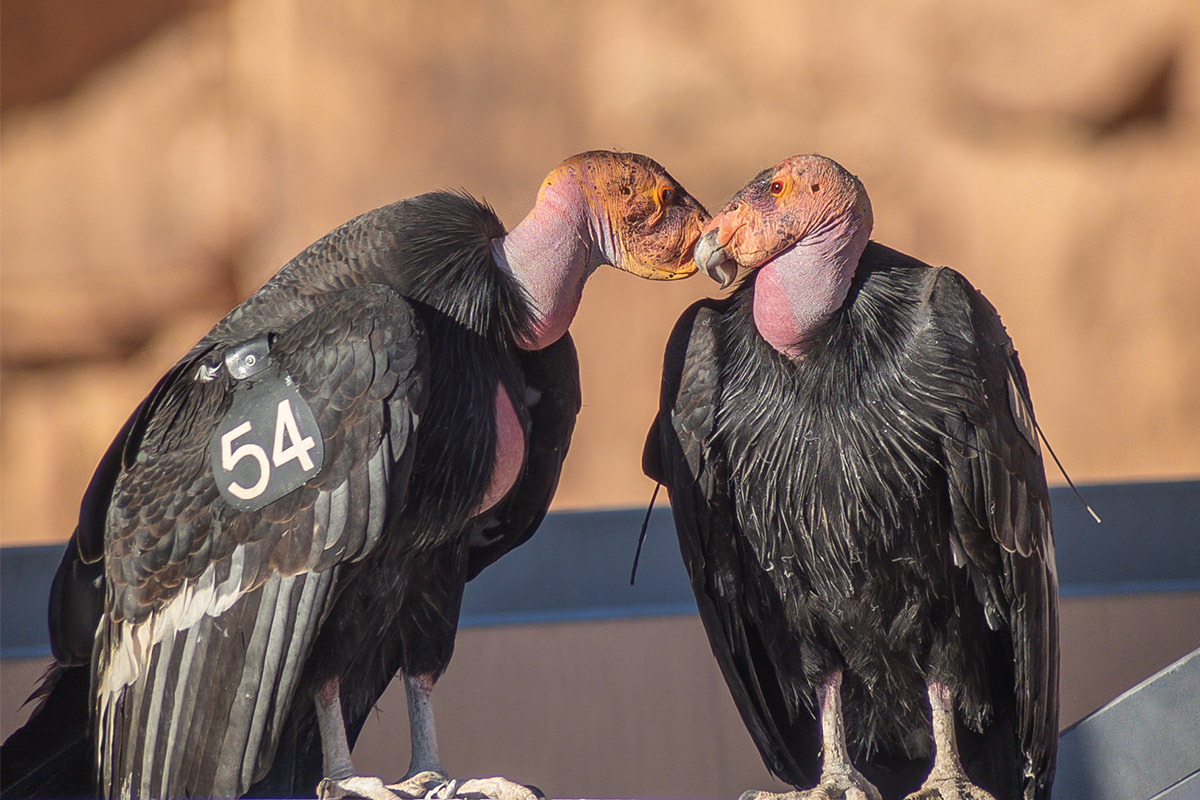
The Rest of This Story is Up to You Too
As complicated as it might seem, everyone can impact this story. Including you!
Firstly, as we mentioned from the beginning, you can be part of the love story of Navajo Bridge by donating to support the ongoing work of The Peregrine Fund to conserve the beautiful and endangered California Condor.
Secondly, as these birds navigate the complexities of life in the wild, they encounter challenges not just from natural predators or diseases like HPAI, but also from the unintended impact of human presence. The issue of microtrash is a glaring example. These intelligent creatures, while scavenging for bone chips to supplement their calcium intake – especially crucial during the egg-laying period – often mistake small pieces of trash for food. This can lead to tragic outcomes, as these foreign objects can't be digested. Even more heart-wrenching is the possibility of adult condors unintentionally feeding this microtrash to their nestlings.
“Being vultures, condors not only eat dead animals but they also have been observed eating small pieces of bone. Although extremely intelligent, condors can’t always tell the difference between small pieces of trash and pieces of bone, and they can unintentionally ingest what is referred to as microtrash. These objects cannot be digested and can cause impaction, ultimately leading to starvation and even death if not caught in time. We encourage all humans to be conscientious about anything they leave behind because of the potential impacts to wildlife”, advises Tim Hauck, Program Director for the California Condor Reintroduction Program.
This part of the story serves as a powerful call to action for all of us. It's a reminder that our actions, even those seemingly insignificant, have the potential to leave a lasting impact on the natural world. By being conscientious about our behavior, especially in natural habitats, adhering to the 'Leave No Trace' principles, and recognizing our shared responsibility towards wildlife we can make a significant difference.
As we continue to follow the tale of the condors at Navajo Bridge, let's remember that our awareness, choices, and actions can contribute to the conservation narrative, fostering the continued flight of these magnificent birds against the backdrop of the wild.
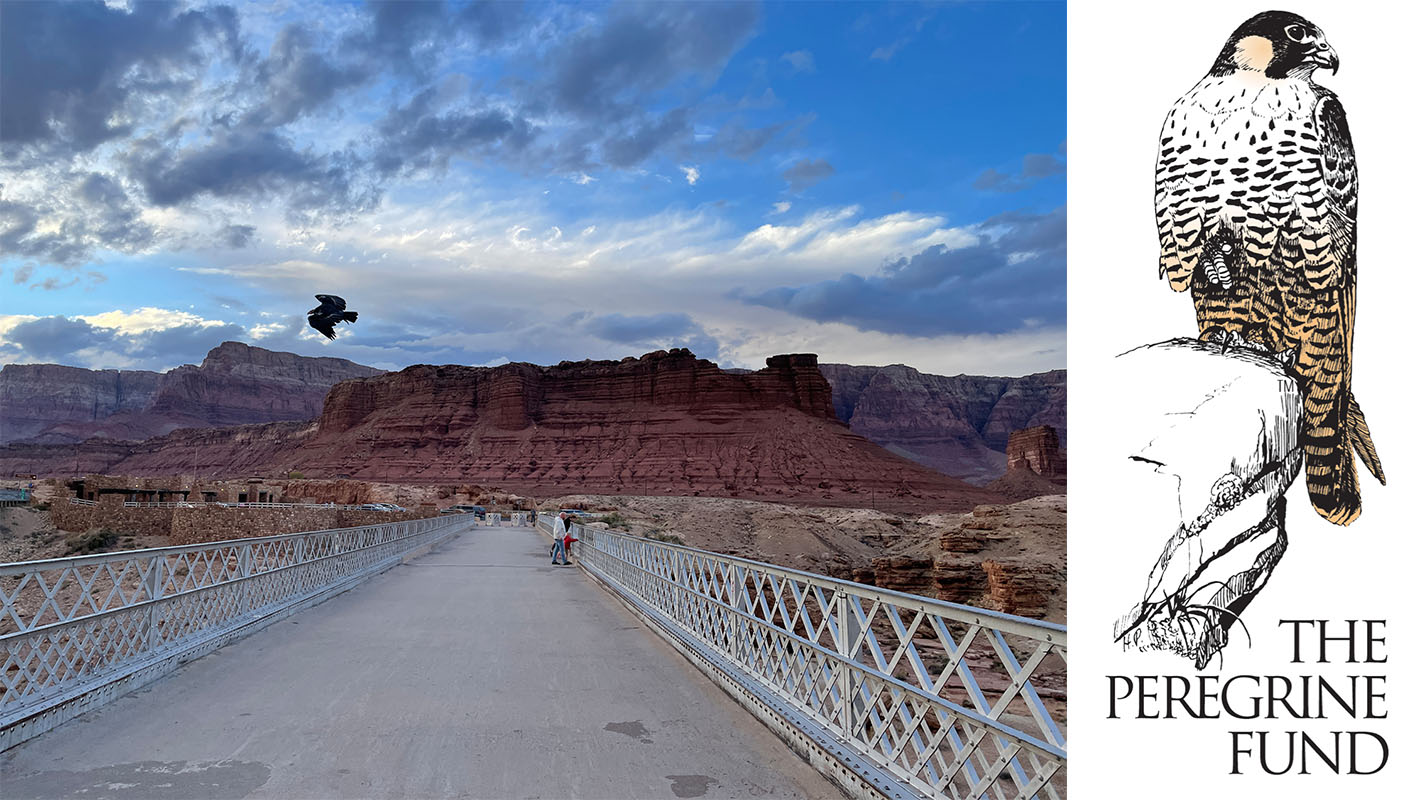
The Major Threat to the Condors' Survival
While the narratives of individual condors and their life stories captivate us, there's a broader, more pervasive threat that looms over the entire species: lead poisoning. This silent, insidious danger represents one of the most significant challenges to the survival of the California Condors. Due to the extensive monitoring of the free-flying condor flock, we now better understand the relationship between lead and wildlife.
Lead, primarily introduced into the environment through ammunition residues in the remains of shot animals, poses a deadly risk to these and other scavengers. Scavenging wildlife, unknowingly ingesting fragments of lead from animal carcasses, face severe health complications, sometimes resulting in death. This issue highlights a critical intersection between human activity and wildlife conservation, where the consequences of seemingly distant actions are felt deeply in the natural world.
However, the response to this threat is not one of blame but of collaboration and solution-seeking. Organizations like The Peregrine Fund have taken a proactive approach, forging partnerships with the hunting community and other stakeholders. These alliances are not about pointing fingers but about working together, educating, and providing viable alternatives, such as copper ammunition, to mitigate this pressing issue.
“We believe that solving problems that affect raptors must be done in partnership with those who can make a difference and have the potential to solve the problem. We were founded by hunters, and many of our current staff at the Peregrine Fund are hunters and that includes falconry, one of the oldest forms of hunting. Our goal is to work with hunters in our quest to eliminate unintentional lead poisoning”, said Tim Hauck.
The North American Non-Lead Partnership, co-founded by The Peregrine Fund stands as a beacon of this collective effort, embodying the belief that conservation challenges are best addressed through unity, understanding, and shared commitment. This collaborative approach, where hunters, conservationists, and researchers come together, paves the way for innovative solutions, fostering a culture of coexistence and mutual respect.
The journey to safeguard these majestic birds is not just a conservationist's battle; it's a shared responsibility, a call to each of us to play our part in ensuring that the skies continue to be graced by the grandeur of the California Condors.
For additional information on the conservation efforts and the strides being made to make the world a more fit place for all wildlife, including California Condors, we highly recommend visiting the North American Non-Lead Partnership. Their website offers a wealth of resources and insights into how communities are coming together to improve ecosystem health.
Explore more at North American Non-Lead Partnership, Huntingwithnonlead.org. Learn more about how you can support The Peregrine Fund here, and if you're interested in donating, click here.
Featured image by: John Sherman.





